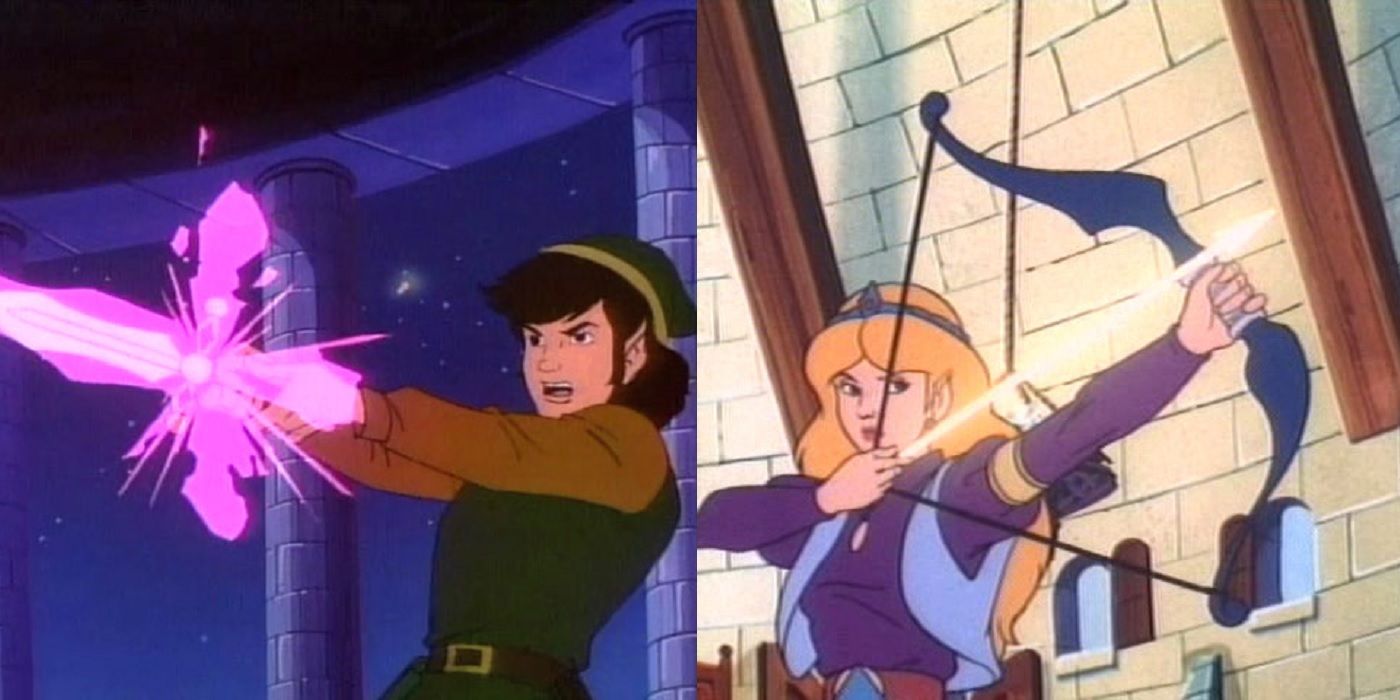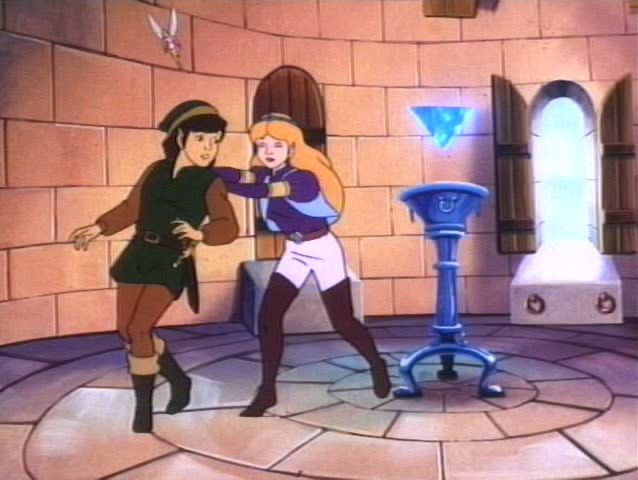The Legend of Zelda cartoon, produced by DIC Animation, debuted in 1989, pushing all 13 of its episodes out before year's end. To put some perspective there, this was only two years after the original game launched outside of Japan, and one year after its black sheep sequel. Looking back, it was commonplace to 'westernize' Japanese brands in a reboot fashion, but this was actually before the practice of blank-slating the Zelda cast was established.
Dressing the original game in Saturday morning clothes and making up a bunch of stuff to fill in the blanks does make the series a laughing stock these days, but back then, there honestly just wasn't that much to work with. There were very few details and canonical pieces of lore to focus on, and even fewer when it came to anything apart from the monsters, Ganon, and Link. Even something as odd as seeing both Zelda and Ganon each possess a 'Triforce,' yet for there to be no third piece for Link was actually in-line with the presented lore at the time. While the series is far from Emmy worthy, it actually holds up better than most game-to-cartoon adaptions from the era, if only because the creators had the foresight and humor to adapt the brand to a genre of television: the romantic comedy.
Firstly, and arguably most importantly, the 1989 DIC adaptation of The Legend of Zelda does something that feels somewhat radical even today, sad as that may be: it places Princess Zelda front and center as an active protagonist. She's mostly serious and even more capable than Link by most measures, but not without moments of joking around - largely at Link's expense. Link is framed as her bodyguard, with his only real talent being fighting monsters. But Zelda is depicted to be roughly as adventurous as he is, even utilizing many of the tools he has become known for – this was years before Hyrule Warriors or Breath of the Wild, and her depiction feels refreshing for the franchise even today.
Zelda functions within the world not as a symbolic politician or dainty royalty so much as a heroic guardian of a magical artifact. Having women on the writing team likely played a big part in this choice, and it's far more charming to see in action than expected after decades of the franchise spinning its wheels just promoting her to a playable character in the main series. This single decision – to make Zelda as important and present as Link – wasn't just a little forward thinking for its time, it was the most important ingredient that leads to everything else the show manages to do well. It may come across as somewhat try-hard today, but even now it's still nice to see that Zelda's potential was being explored so early on into the franchise's life.
Link himself is depicted as a manchild, to be sure, but fans of Sonic the Hedgehog (especially any of his cartoon outings), will likely see the appeal of Link here: a cocky, one-liner-spitting action hero. Also strange but nonetheless fun is seeing a different version of Hylian combat. Link fights with a small dagger-like weapon, focused more on firing lasers from it with acrobatic hijinx he'd never portrayed as doing today (for better, for worse, and for comedy). He is the most vocal and exaggerated iteration of the character to date, and while that doesn't say much in and of itself, the dynamic this creates lends itself to a strangely fun romantic comedy style of approach.
Link is the kind of creepy, super thirsty mad lad whose persistence may eventually pay off, while Zelda is the reasonable, sturdy, no-nonsense brains of the operation who may or may not be wooed a bit by Link's brawn. Is it a healthy dynamic? Nope, not really. But it's also never really portrayed with any kind of permanence so much as two co-workers who have the hots for each other but never do anything about it. And so the flirtation remains corny, even sometimes oppressive, with the teasing and taunting going back and forth as the shrieking pig man is foiled again in the background. And hoo, boy, does the pig man shriek in a fashion unbecoming of what fans associate with the 'King of Evil.'
One key difference between the 1989 animation and the even more infamous CDi games is that the latter clearly feels like something crunched on a budget by people just struggling to earn a paycheck with little familiarity of the brand. The Zelda cartoon at least tries with every episode to take elements from the original game and build some kind of world out of the basic blocks, occasionally tossing in a cool unicorn and a ninja lady from their toybox because why not? Ninja ladies are awesome, unicorns are awesome, there was no rule back then saying these things didn't exist in Hyrule – and even Nintendo has wised up on the ninja lady thing.
The DIC version of The Legend of Zelda is a cartoon that has aged better than its trying-too-hard kin largely because it planted its Normal Boots down on the idea of just being a quirky romantic comedy. Products of its time manage to be ironically humorous – moments of outdated writing, goofy voice acting, nonsensical action, and weird animation hiccups. But unlike most of its peers, its original ideas and distinct genre-breaking identity have helped keep it feeling like just another black sheep iteration of the long-running struggle for the Triforce.
The Legend of Zelda cartoon is not currently available on any prominent streaming platforms, but can be found on DVD.


